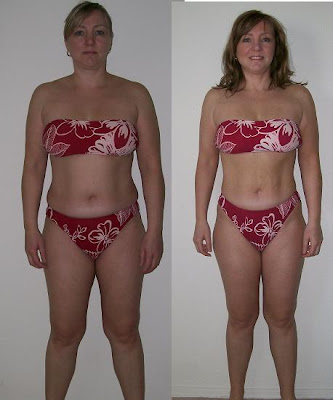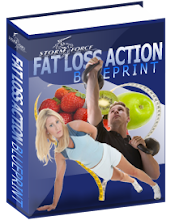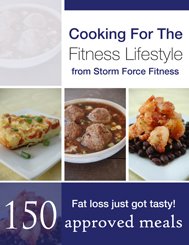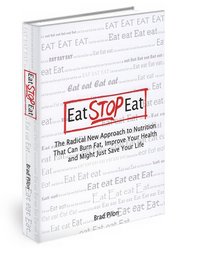However, times have changed and now girls do weights (if they have any sense) and cats themselves are fat enough to get stuck due to being fed the same rubbish their owners eat.

With this new found wave of girls with great, toned bodies and metrosexual men with crap hair cuts came the multi-billion dollar protein industry with everything from 'Red Carpet Body Shakes' to 'Maxi Bicep Pump Magic' with more colours than a Willy Wonka golden ticket bar.

I too got suckered into thinking more protein equals more muscle.
However, after reading Brad Pilon's Eat Stop Eat e-book which comes with 'How Much Protein?' my eyes were opened wide to some interesting truths.
1) Nearly all research confirming the need for 5-6 meals per day all containing protein, has been funded by supplement companies.
You can work that one out for yourself.
2) Having shovelled as much protein in as possible to build muscle, was I really that much bigger over a few years?
The answer is 'not really'.
Surely if muscle growth was directly correlated to protein intake I would have nearly twice as much muscle as I had when I ate three meals per day containing protein, compared to six.
Brad goes on to discuss how many of the guys we see guzzling shakes and bars as soon as they're off the gym floor rarely make noticeable progress unless they are on the 'magic juice'.
This would indicate it is actually something wrong in their training programs.
3) There is strong evidence that past eating 70-120g of protein per day, extra protein will not be used to build extra muscle. (Small females towards the lower end and big boys towards the top)
Annoyingly, these amounts are the same as what was first discovered around 1900.
That was 100 years well spent then.
Girls listen up - many of you (and some blokes) do not get ENOUGH protein. You should be aiming for 70g of lean quality protein each day if you want to add muscle and burn more fat for a curvy, lean body.
4) Much of the research 'proving' that protein intake above these amounts led to greater lean muscle tissue is actually flawed as they are based not on measuring lean muscle tissue but on positive nitrogen balance in the body.
Brad tells us that at this time, there is no way to accurately measure lean muscle tissue increase and no concrete evidence that positive nitrogen balance means a proportionate increase in lean muscle tissue.
5) There is little evidence to suggest we are able to put on more than 2-5lbs of pure lean muscle tissue (not including water) over about 8 weeks.
You really must see the review of the research that Brad provides to fully grasp these concepts!
Self-experiment
As always I had to experiment on myself before agreeing or disagreeing with any of this.
Along with the intermittent fasting of the Eat Stop Eat program (I did one 24h fast per week instead of two as I'm not looking to drop weight), I reduced my protein intake from around 170g per day to 100-110g.
Bear in mind I am doing this during a 12 week tough conditioning program which isn't focussed on heavy lifting. I'm focussed solely on improving endurance, stamina, and power-endurance during this program which includes one long run each week.
You would therefore expect a drop in muscle mass due to lower protein intake if what we thought we knew about protein was right.
However, in the last 4 weeks my weight has remained exactly the same at 79kg with my body fat reducing slightly as can be seen below.

The other benefits of using Pilon's program are four fold:
1) My food bill has gone down by 20 GBP per week (about $30).
2) It was nice to have a day without having to worry about eating times and I got a lot more done because I timed it with my busy Fridays.
3) It made me realise that a lot of my 'hunger' is merely because I and the crappy fitness magazines have programmed me to think I need food (including lots of protein) every 3 hours or I am going to waste away.
This has also been great for self-discipline.
4) It automatically creates a calorie deficit for fat loss without needing to measure portions or rule your life by food times.
Before you protein monsters dismiss this, listen up.
Anyone that knows me well enough knows that the concept of Jon Le Tocq going 24 hours with nothing but water is absurd. I am an eating machine capable of devouring obscene amounts of food when required in eating competitions.
Thoughts about doing this bounced around my head for a good ten days but I ALWAYS experiment if I think it will bring clients and readers better results when they have stuttered to a halt.
You will surprise yourself and could completely change your approach to food both for yourself and for clients if you are a trainer!
I strongly suggest you check out Brad's program as soon as possible to discover the truth about protein.
Failing that, just experiment on yourself for a few weeks - you'll surprise yourself and could save a packet!
PS Brad has some very interesting thoughts on protein supplements...
Eat Stop Eat









.JPG)




.JPG)


.JPG)





